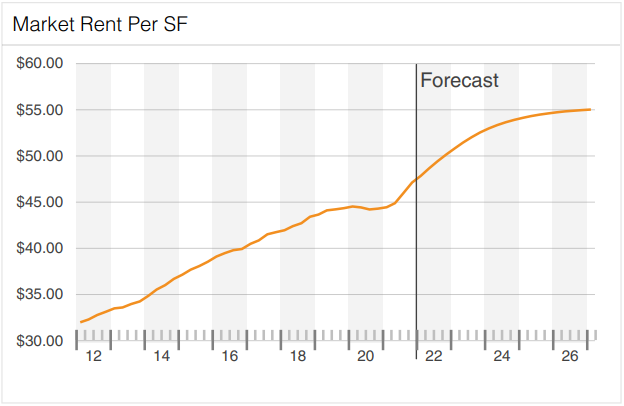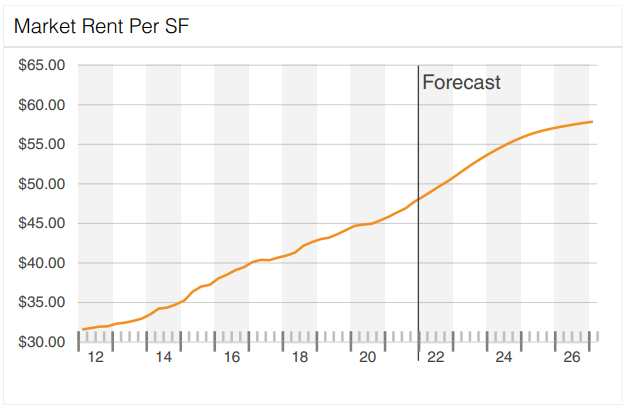Residential Rents Are High as Skyscrapers — Are Commercial Rents Keeping Up?
Rents are through the (residential) roof in Miami. We all know this. But what about commercial rents? How have office and retail space rent prices changed over the past few years? Has that change been the same as residential rent prices or different? And will it continue to increase as sharply?
Here’s what the data tells us: office and retail space rent prices are increasing at a slower rate than residential (multifamily) rent prices.
Don’t believe us? We dove into the cold, hard facts, so you don’t have to. Keep reading to see some seriously revealing data and what that means for you as a resident and commercial tenant.
What is the Data Showing Us?
The graph above depicts the Market Effective Rent per Square Foot for multifamily rent prices. From 2012 through 2020, the multifamily rent prices per square foot increased from about $1.80 to about $2.20, a steady increase of 22.2% over eight years. However, when examining the years 2020-2021, there was a sharp increase in the rent per square foot—from $2.20 to about $2.80. A $0.60 increase translates to 27.27%. In less than two years, residential rent prices have increased more than they did over a period of eight years.
Did Office and Retail Spaces See the Same Rental Increases?
Looking at the retail space rental prices (pictured left, above), there was a steady increase of about 41.26% from 2012 to 2020. From 2020 to 2021, rental costs increased about 5.62%, which is about a fifth of the increase that occurred for multifamily rental prices within the same timeframe. The retail space rental prices seem to be following the same trend as the office rental prices.
From 2012 to 2020, office rental prices steadily increased by 45.16% (pictured right, above), slightly higher than the retail space increase but immensely less than residential rental prices. The rental price increase for office spaces from 2020 to 2021 was about a 6.67% increase.
Why Are There Rent-Increase Discrepancies Between Sectors?
You know what we’re going to say: the pandemic. The COVID-19 pandemic has been a major external factor when it comes to the residential rental market.
During the early stages of the pandemic, the U.S. government put in an eviction-proof statute due to residents being unable to go to work and pay for rent. This was a major turning point for the rental market. At the time, reducing rental prices seemed like the best thing for landlords to do. This is the aftermath.
Not only did the pandemic affect landlords and residents, but it impacted businesses as well. At the initial phase of the pandemic, many small businesses were forced to shut down due to low consumer demand and less foot traffic, leaving retail spaces abandoned for some time.
The same can be said for office spaces. People who worked in pre-pandemic offices were asked to work from home—cue the WFH era. And it’s likely that working from home is here to stay, whether as part of a hybrid schedule or as a replacement for the conventional workplace entirely.
What Could This Mean for Miami’s Future?
Residential rental prices will increase by 25% from 2022 to 2026. This increase is slightly lower than office or retail rental prices. These differences between the various sectors in Miami will be impacted by the overall change that will come with the end of the COVID-19 pandemic.
In contrast, there’s an upward trend in Miami rent prices starting from this year, it’s projected that the rent prices for office and retail spaces will increase about 33.33% from 2022 to 2026—a much smaller increase than we saw from 2020 to 2022.
Rising residential prices are not solely due to the pandemic. They’re also attributed to high demand. And with new residents, comes new business. This influx of residents will likely increase the demand for commercial spaces and fuel our local economy, possibly leading to less commercial space availability.
Our recommendation? Take advantage of the commercial rental rates as they are right now because, one, it’s likely that commercial rents will follow the residential trends as time passes and both markets grow, and two, it’s always a good time to invest.
How Can Metro 1 Help?
After seeing the trends in residential and commercial real estate rental prices, you might be wondering how you can find the right property to invest in. Having worked in these communities for over 15 years, we know the ins and outs of some of Miami’s most popular and historic neighborhoods. That’s why we work to get you the best deal on the property that most fits your needs. Contact us for more info.
e broker on your side is even better. Contact us and let’s get working.






